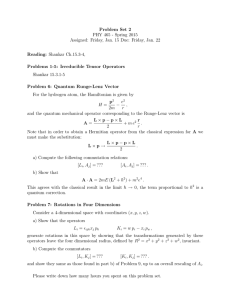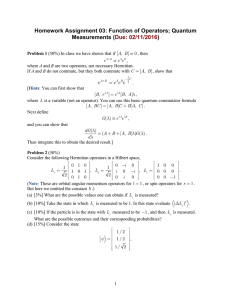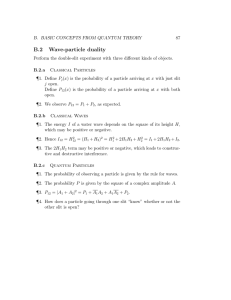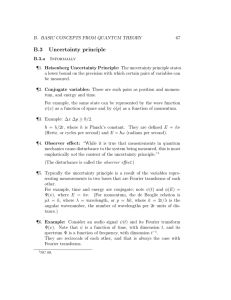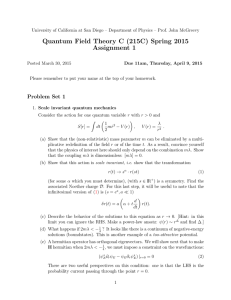Peskin & Schroeder, Chapter 3, Problems 5-8
advertisement
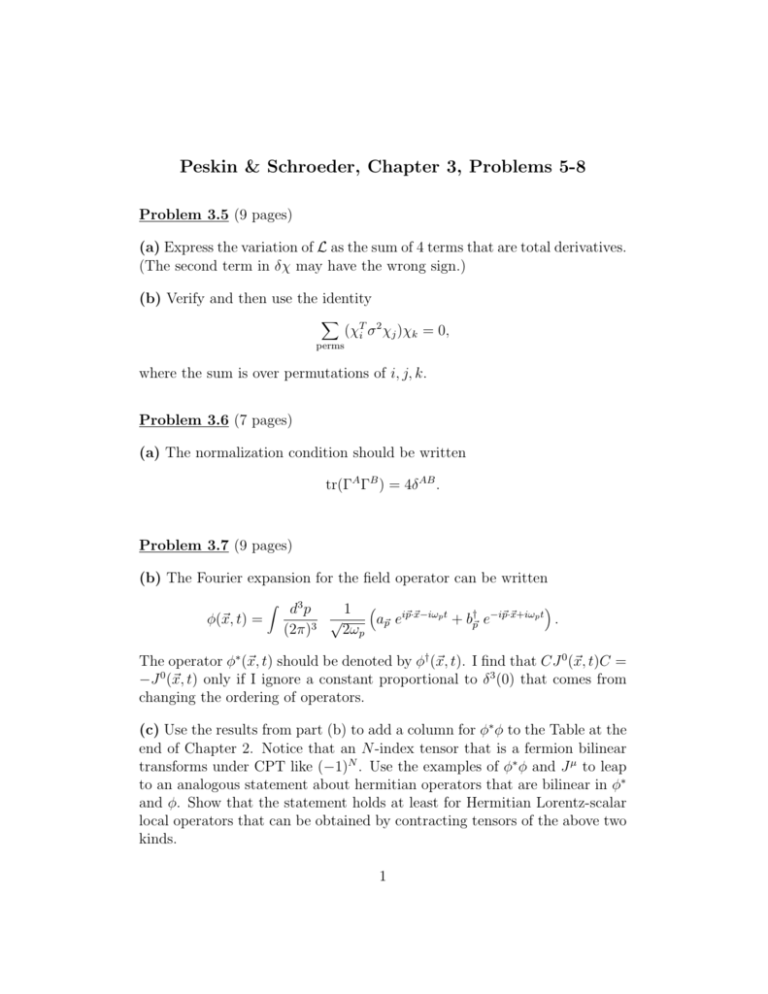
Peskin & Schroeder, Chapter 3, Problems 5-8 Problem 3.5 (9 pages) (a) Express the variation of L as the sum of 4 terms that are total derivatives. (The second term in δχ may have the wrong sign.) (b) Verify and then use the identity X (χTi σ 2 χj )χk = 0, perms where the sum is over permutations of i, j, k. Problem 3.6 (7 pages) (a) The normalization condition should be written tr(ΓA ΓB ) = 4δ AB . Problem 3.7 (9 pages) (b) The Fourier expansion for the field operator can be written φ(~x, t) = Z 1 d3 p † −i~ i~ p·~ x−iωp t p·~ x+iωp t √ a e + b e . p ~ p ~ (2π)3 2ωp The operator φ∗ (~x, t) should be denoted by φ† (~x, t). I find that CJ 0 (~x, t)C = −J 0 (~x, t) only if I ignore a constant proportional to δ 3 (0) that comes from changing the ordering of operators. (c) Use the results from part (b) to add a column for φ∗ φ to the Table at the end of Chapter 2. Notice that an N -index tensor that is a fermion bilinear transforms under CPT like (−1)N . Use the examples of φ∗ φ and J µ to leap to an analogous statement about hermitian operators that are bilinear in φ∗ and φ. Show that the statement holds at least for Hermitian Lorentz-scalar local operators that can be obtained by contracting tensors of the above two kinds. 1 Problem 3.8 (5 pages) You can assume that a bound state with orbital angular momentum quantum number ` = 0, 1, 2, . . ., total spin quantum number s = 0 or 1, and total angular momentum quantum numbers j, mj can be expressed in the form |`sjmj i = Z XX d3 p hjmj |`m` sms iY`m` (p̂) χ`sj (p) 3 (2π) m` ms × XX m1 m2 hsms | 12 m1 12 m2 i |e− (~p, m1 )e+ (−~p, m2 )i. (a) Write down the actions of P and C on the |e− e+ i states, taking into account that particles and antiparticles have opposite intrinsic parities and that a 2-fermion state changes sign when the order of the fermions is reversed: |e+ e− i = −|e− e+ i. Deduce the action of P and C on the bound state by changing the integration variable: p~ → −~p. (b) Deduce the parity and charge conjugation quantum numbers of the photon from the symmetry of electrodynamics under P and C and from the fact that photons are created (and annihilated) by the transverse spacial components of the field Aµ (x). The spin-0 and spin-1 ground states of positronium are the S-wave (` = 0) bound states with s = 0 and s = 1, respectively. Use charge conjugation symmetry to deduce whether these states can decay into 2 or 3 photons. In the last sentence, interpret “Find the selection rules ...” as “Find the charge conjugation selection rules ...” 2
